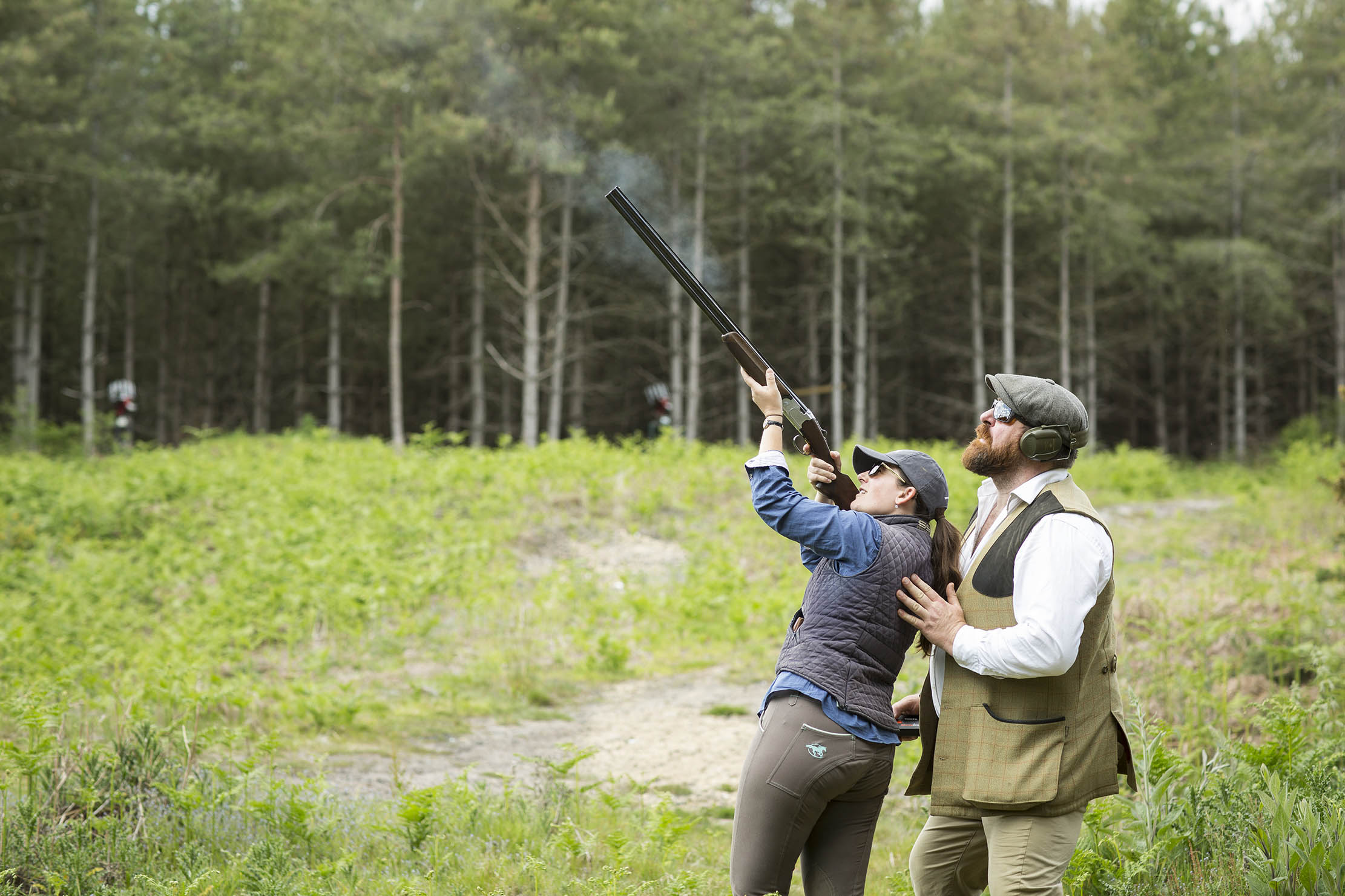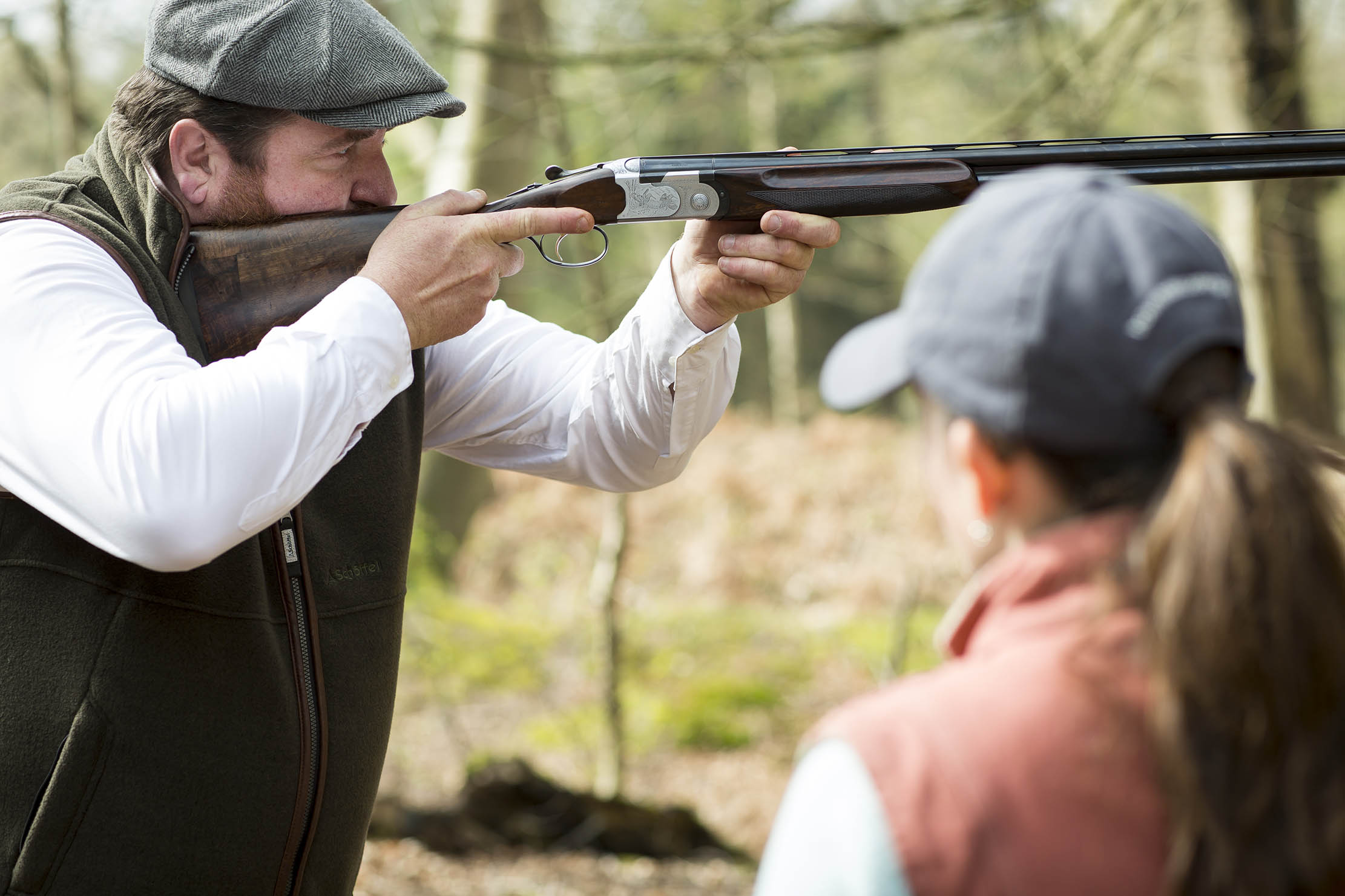An absolute beginner's guide to clay pigeon shooting, part two: Relax, breathe, trust... and avoid the temptation to squeak in triumph
Absolute beginner Octavia Pollock is learning clay pigeon shooting at Hownhall, part of the Cowdray Estate — in part one she was distracted by dogs and coffee before getting the hang of things; this is what happened when she went back for lesson two.

Absolute beginner Octavia Pollock is learning clay pigeon shooting at Hownhall, part of the Cowdray Estate — in part one she was distracted by dogs and coffee before getting the hang of things; this is what happened when she went back for lesson two.
‘We’re going to skip forward a bit today,’ was Simon’s somewhat disconcerting opening gambit. Having spent my first lesson on the simpler beginner’s stand, with a gently swooping clay moving from left to right, I was now to take up position on the driven-game stand, over which clays soar from front to back, imitating swift high pheasants. After obliterating a few easier targets (I smashed the first pair and was tempted to quit after a 100% strike rate), we moved a few hundred yards down the valley to the driven-game stand.
I had assumed the concept of zen was confined to other areas of the Cowdray estate: Cowdray Hall hosts yoga, pilates and meditation and International Yoga Day crowded the sun-soaked polo lawns with flexible limbs on June 21. However, it’s frequently present in shooting, too, as Simon revealed. On this new stand, the speeding clay arced up out of the treeline to pass over my head. My job was to follow it up, sweep the barrel through and in front of the line and fire as soon as I could no longer see it. Counter-intuitive in explanation, entirely intuitive in practice. The key was to relax, breathe and trust that when the clay had vanished from sight, it was in my sights. I was soon hitting clay after clay, an immensely satisfying experience.
Because I was taking the shot when the clay was almost over my head, key to success was moving the barrel smoothly upwards. Rather than leaning back and rocking my whole body backwards, Simon showed my how I had to push the barrel up with my left hand and keep my stance upright. This kept me in balance, with feet still firmly planted, and ensured the gun stayed anchored in place, butt against shoulder, stock against cheek.

The temptation was frequently to relax the gun after I had fired one barrel, especially when I actually hit the clay and wanted to squeak with triumph, but that’s no way to successfully get a right and left. (Apparently, it’s never a left and right, and it’s the same term whether you’re shooting with a side-by-side or an over-and-under.) Raising your head between shots and having to hurriedly replace it is also an excellent way to get a bruised cheekbone, at least until you’re confident mounting the gun, and I need a lot more practice before that’s the case.
Indeed, getting familiar with good practice is essential to avoid bad habits, which ensures correct behaviour and, more importantly, safety in the field. To allow me to focus on shooting, Simon had been acting as my loader, but as I became more confident I broke and close the gun myself. On a clay ground, you can be confident there is no one in front of you, but Simon showed me how to close the gun and hold it at an angle in front of you, so the barrels point down and to the side, before swinging it smoothly up to your shoulder. In that way, the beaters away ahead are never in range.
After a shot, the heated, empty cartridges will fly out when you break the gun, which can give rise to some cracking photographs. It’s generally best to curtail the flourish, however, and pop them in a container. No one wants to see the ground littered with used cartridges. When carrying the gun, break it, ensure it is unloaded and hold it in the crook of your arm, secure and safe.
Exquisite houses, the beauty of Nature, and how to get the most from your life, straight to your inbox.
Shooting is a timeless sport and the rules that govern it are simple, obvious and absolutely essential. For a start, don’t endanger anyone — including yourself — and don’t litter!
Clay pigeon shooting lessons at Hownhall range from 'have a go' taster sessions to expert tuition — see more details at www.cowdray.co.uk.
Toby Keel is Country Life's Digital Director, and has been running the website and social media channels since 2016. A former sports journalist, he writes about property, cars, lifestyle, travel, nature.

